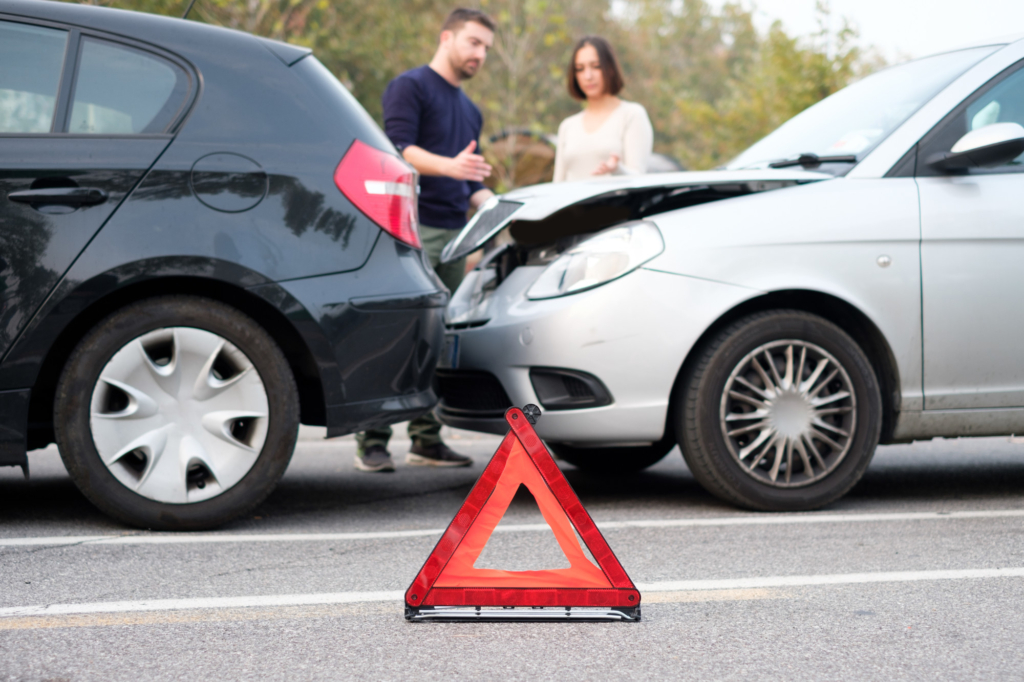
Regularly, you might not think much about whether Arizona is an at-fault state or a no-fault state. However, if you’re ever injured in a car accident, this will be valuable information to know.
The Grand Canyon State is an at-fault state. This means that the person directly responsible for causing the accident is the one who is required to pay for it. What does that mean exactly, and how does it differ from a no-fault state?
These two terms are similar, and they can be confusing. In today’s post, we’re breaking down all of the important details you need to know.
What Is A No-Fault State?
In a no-fault state, someone injured in an accident is not required to prove who was at fault before they can receive compensation from their insurance company. Instead, your auto insurer will pay for the cost of damages up to a pre-determined amount. You will receive this payout regardless of who caused the accident to occur.
While this sounds simple enough, it can become complicated. This is especially the case when you consider that each insurance company has its own version of a no-fault policy. The state that you live in will determine the exact extent of your coverage.
If you are injured in an accident in a no-fault state, you will file the claim directly with your own insurance company, regardless of who was at fault. In this way, no-fault insurance coverage is different from other forms of auto insurance, including liability insurance and collision insurance. Both of those insurance policies issue payouts based on who is found responsible for causing the accident.
To date, 12 out of the 50 states in the United States are recognized as following no-fault insurance laws.
These states include:
- Florida
- Hawaii
- Kansas
- Kentucky
- Massachusetts
- Michigan
- Minnesota
- North Dakota
- New Jersey
- New York
- Pennsylvania
- Utah
In addition, Puerto Rico also has a no-fault insurance system in place.
Personal Injury Policies in a No-Fault State
In a true no-fault state, every driver on the road is required to carry what’s known as a Personal Injury Policy, or PIP. This policy will cover the driver’s medical expenses if they are ever injured in a car accident, regardless of who was at fault. In some cases, it will also cover the driver’s loss of income, as well as the cost of hiring someone to complete basic household tasks while they recover.
The insurance company will work with the driver to set a monetary limit for their PIP policy. If the cost of their medical expenses exceeds the limit on the driver’s policy, they may be able to use their health insurance coverage to pay for the remaining costs.
It’s important to note that PIP policies have a per-person maximum. Thus, if multiple people are involved in an accident, each person is limited to a certain amount of coverage.
Personal Injury vs. Property Damage
There is one critical distinction to make about no-fault auto insurance. The “no-fault” portion of the policy only applies to any personal injuries that the driver or their passengers may have sustained, such as a broken bone or laceration.
The responsible driver is still required to pay for any property damages that occurred to the other party’s vehicle.
How does it work?
After an accident occurs, both drivers will contact their insurance company to activate their individual PIP policies. They will use that money to cover the cost of their medical care (up to the maximum amount). This step will occur no matter who initially caused the collision.
However, if a driver sustains property damages related to the accident, they will reach out to the at-fault driver for compensation. In turn, the at-fault driver will work with their insurance company to cover those repairs. To do so, they’ll tap into the property damage liability portion of their coverage.
What Is an At-Fault State?
At-fault states follow what’s known as a tort system. This means that before a driver can receive compensation for medical care or loss of income related to an accident, they must be able to prove who caused the accident first.
Then, the person deemed responsible is the one who will be required to cover the injured party (or parties)’s expenses. In addition to the cost of care, they may also need to pay for any property damages that the accident caused.
To cover these costs, the at-fault driver may file an insurance claim with their own insurance company. Or, they may choose to pay for the expenses out of pocket. The remaining 38 U.S. states are identified as at-fault states.
PIP Policies in an At-Fault State
Many people don’t realize that drivers who live in a tort state can also choose to voluntarily purchase a PIP policy or medical payments coverage to protect them on the road, just as someone in a no-fault state would do.
If you do so, then that coverage would pay for your medical bills, as well as the medical bills of your passengers, if you are even injured in an accident. When this happens, your insurance company will work with the at-fault driver’s insurance company to receive compensation for that payout. This occurs through a process known as subrogation.
Using Auto Insurance to Cover Costs
If a driver causes a collision and uses their insurance to help pay for the damages, two steps will occur.
First, they will use the property damage liability portion of their policy. This portion is set aside to cover another driver’s vehicle. If the accident damaged the vehicle in any way, this money can be designated for the necessary repairs.
They will then use the bodily injury liability portion of their policy. This portion is designed to cover another driver’s medical expenses if they are injured in an accident. It can also be used to cover the medical expenses of any passengers who were also injured in the accident.
If the at-fault driver was also injured, then their policy may also include coverage for their property damage or medical expenses, including those of any passengers.
Paying For Costs Out of Pocket
What if the driver’s auto insurance policy isn’t robust enough to cover the full extent of property repairs or medical expenses required?
In that case, the at-fault driver will be responsible for covering those extra costs on their own. They may also choose to do this from the very beginning, to avoid involving their insurance company. If the damages or medical bills are minor, some drivers may see this as an easier way to resolve the case.
How Will This Affect My Insurance Premium?
If you are deemed responsible for a car accident in an at-fault state, then your insurance premium may increase. There are a few different factors that can affect the rate of this increase, such as:
- The severity of the accident
- Your existing insurance claim history
- Your insurance company
If you were enjoying a lower rate on your premium based on a claim-free discount, then you could still see your rates rise after an accident, even if you weren’t the one at fault. However, some insurance companies will waive the spike after your first collision if they have an accident forgiveness policy in place.
If you have any questions about your policy, you can speak to your insurance representative to learn more about how it works. However, it’s always best to hire a lawyer to handle insurance negotiations after an accident. This legal expert understands how the process works and what to say to help you receive the maximum compensation possible.
It’s common for insurance companies to try and settle your claim by offering you a monetary amount that sounds adequate, but is much lower than you truly require. If you agree to that settlement without speaking to a lawyer, then you could miss out on a value increase.
What If I’m in an Accident But Not at Fault?
Now that we know how at-fault and no-fault insurance policies work in car accidents, let’s cover what you need to do if you ever find yourself in this situation.
If you’re involved in a car accident that you did not cause, then your claim will be handled based on that state’s specific fault laws. If the accident occurs in a no-fault state, then your personal PIP policy will cover your medical bills, lost wages, and the cost of at-home care (if required). The responsible driver’s policy will cover any vehicle damages you sustained.
On the other hand, if the accident occurs in an at-fault state, the responsible driver’s insurance policy will cover both your medical bills and your vehicle repairs. If
Proving Negligence in a Car Accident Case
A car accident can happen in an instant. As such, it isn’t always crystal clear who caused it to occur. In no-fault states, this isn’t typically a primary concern unless property damages are incurred.
However, it’s a critical concern in an at-fault state, such as Arizona.
Sometimes, you can determine that one driver was solely responsible for the entire accident. Other times, both parties were partially at fault, and each did something negligent to contribute to the outcome. If this is the case, both insurance companies will closely examine the case to determine the extent of each driver’s negligence.
There are three different categories of negligence in a car accident case. These include:
- Pure contributory
- Pure comparative
- Modified comparative
Under pure contributory negligence, a driver cannot recover any damages related to an accident if they are even 1% at fault for it. Conversely, pure comparative negligence allows a driver to recover damages even if they hold 99% of the fault for the accident. Modified comparative negligence means that the degree of negligence is determined in accordance with the percentage of fault that each party assumes.
Each state has its own definition of negligence. Your claim will be handled based on where you live and the degree of responsibility that you ultimately assume in an accident.
The Benefits of Hiring a Car Accident Attorney
If there is any question of negligence, it’s best to hire a car accident attorney.
Lawyers understand that there are only three occurrences that can cause an accident. It can be the outcome of negligent driving, human error, or natural and unavoidable conditions. If yours occurs due to the negligence of someone else, they will work to uncover all of the pertinent details required to prove that liability.
This may include using witnesses, as well as accident reconstruction experts, to recreate or revisit the scene of the accident. These experts can help build a solid case for you, and prove that the other party was at fault. If that person does not have auto insurance, then your lawyer can contact your insurance company to see if you have non-insured motorist coverage.
If you do, then your insurance company will assume the role of the negligent driver without coverage. They will compensate you for the damages, and your insurance rates will not go up.
Hire a Car Accident Attorney Today
Arizona is an at-fault state. This means that your ability to prove driver negligence is critical to the outcome of your case. This way, the driver’s insurance will cover the cost of your medical care and damages.
It can be difficult to discern between at-fault and no-fault policies on your own. When you trust our team to handle your case, we’ll work tirelessly to sort through the details, prove negligence, and protect your rights. You can focus on healing mentally and physically, assured that we’re dedicated to the task.
When you’re ready, contact us today to schedule a free consultation.

![Horrific 2-Car Crash on US 50 Left 2 Minors Hurt [Lyon County, NV]](https://cdn-sweetlaw3.pressidium.com/wp-content/uploads/2024/03/how-do-police-determine-fault-in-an-accident.jpeg)
![Disastrous 2-Vehicle Crash Near Bell Road Injures 2 Motorcyclists [Surprise, AZ]](https://cdn-sweetlaw3.pressidium.com/wp-content/uploads/2024/03/semi-truck-crash.jpeg)

